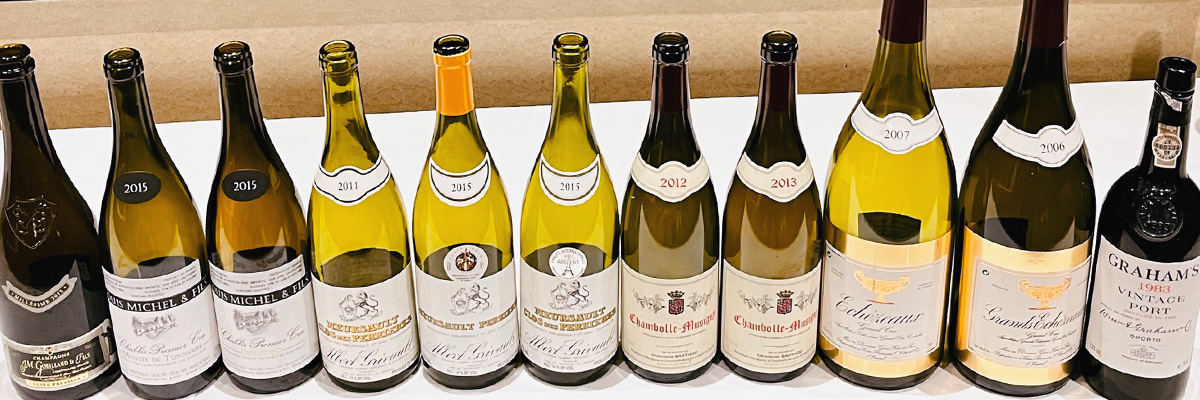
Always fascinated by the subtle differences shown by Burgundy wines. So many unique terroir smaller vineyards all close together that are impacted by the weather variations each vintage resulting in wines that once bottled are continuing to change. Rather complicated. This impression is often markedly noted at events featuring several wines from similar regions but in comparative vintages. Such was the case again on February 20, 2024 at a wine tasting dinner at Forage in Vancouver held by the Confrerie des Chevaliers du Tastevin. After an aperitif of ripe 2015 Gobillard Cuvee Prestige Champagne from Hautvilliers of 60% Chardonnay & 40% Pinot Noir we moved into the First course comparing the same vintage 2015 of Louis Michel two top 1er Cru Chablis:
2015 CHABLIS 1ER CRU MONTEE DE TONNERRE LOUIS MICHEL
2015 CHABLIS 1ER CRU VAULORENT LOUIS MICHEL
This is a respected producer dating back to 1850 and since 2007 managed by Guilliaume Michel. Your scribe last visited with Guillaume in Chablis on October 5, 2023 and tasted their excellent pure old style no wood used with usual lower alcohol Chablis from mainly 2021 & 2020 vintages. Impressed served blind the 2009 Les Clos with more spice and exotica but softer rounder and smooth textures. Guessed 2015 Les Clos (not the structure of 2014) but surprised on revealing that it was that old from another ripe year of 2009. Developing slowly. Classic with a wonderful future.
Tonight arguably the very best 1er crus from the Right Bank adjoining the Grand Crus but at opposite ends. This MdT adjoins Les Blanchots as a special one parcel of 4.5 hectares all on the main plateau in Chapelot. 2015 picked quickly and earlier in September because of the hailstorms. The terroir is usually naturally more opulent with smoky complexity. Here it shows minerals with lemon & spicy white flowers but is leaner and fresher than expected. The often steely Vaulorent (carved out as a special part of Fourchaume) on the other side adjoining Les Preuses is here atypically a richer rounder wine already at maturity. C’est la vie.
Next, an educational study of the best vineyard of Meursault in Perrieres. Two vintages from Albert Grivault of their Monopole Clos des Perrieres being .95ha of more clay topsoil over white marl than the rest of their Perrieres holdings of 1.55 ha (totalling largest of 2.5ha of total AC plantings of 13.72 followed by Bouchard Pere at 1.2ha). The 2015 at 14 abv as expected was powerful combining the minerals of Genevrieres plus the roundness of Charmes in an excellent ripe orange & hazelnut complexity asking for more bottle age. The 2011 at 13 abv was a lighter, most elegant, yet very stylish vintage. However, your scribe discovered that 4 bottles of 2015 were served but 2 were not the Clos but the Grivault regular Perrieres but our servers didn’t tell us which one we each received. Unfortunately a lost opportunity for an insightful comparison between the Clos & the regular Meursault Perrieres 2015 by Grivault.
Third course was a delicious lamb shoulder that improved the following two red Burgundies:
2012 CHAMBOLLE MUSIGNY VILLAGE GHISLAINE BARTHOD
2013 CHAMBOLLE MUSIGNY VILLAGE GHISLAINE BARTHOD
This domaine evolved from a fusion in the late twenties of the Marcel Noellat & Barthod families. Ghislaine started in the 1980s as an apprentice for her father and built a respected house which originally only labelled Les Charmes but now have 11 small top parcels on limestone gravel soils resulting in wines of finesse & delicacy. Since 2019 her son Clement is helping manage plus also with his father Louis Boillot but they keep the two domains separate. 2012 is generally a riper thicker skin tannic year compared to 2013 a cooler late harvest less ripe one. However, a big surprise here is that 2012 is much lighter and drier with less ripe fruit than 2013 as the later harvest delivered lovely raspberry sour cherry fruit. Both still in a primary stage with the sensual fruit waiting to come together but the village level is not as adorably balanced with charm as are Premier & Grand Crus of this wonderful AC.
The final educational lesson was shown by 2 magnums each of these Grand Crus:
2007 ECHEZEAUX DOMAINE GROS FRERE ET SOEUR
2006 GRANDS ECHEZEAUX DOMAINE GROS FRERE ET SOEUR
A wine with the Gros name is admired and now widely spread by many producers. In 1963 the Vosne Romanee estate for 160 years was divided into 4 parts with 2 combined into GF&S run by Bernard Gros. Significant replanting was done from the mid-eighties. As with the last flight 2 adjoining vintages to compare but again not years of the highest consistent quality. 2007 had bad summer weather resulting in variable wines with higher acidity while 2006 was ripe but with rot issues requiring crucial sorting of the fruit and so also is variable. Echezeaux is a large 37+ ha on a higher slope above smaller 9+ ha Grands Echezeaux ( adjoining Clos Vougeot) gentle slope with thicker clay. The name Grands is an unfortunate choice because it gives the indication that it is always better but is not necessarily so though often shows a fuller texture. Here the 2007 is way lighter in colour though has the most exquisite pure nose with palate acidity to age well. This 2006 has a darker look and riper more concentrated as expected but less clean not as pure aromas – more rustic. Backward Grand Crus – especially in magnum format. Some members actually preferred the two younger Village Chambolle Musigny over these higher classified older backward ones. Wonder how this report will change with 5 years more time for these wines to age in the bottle?
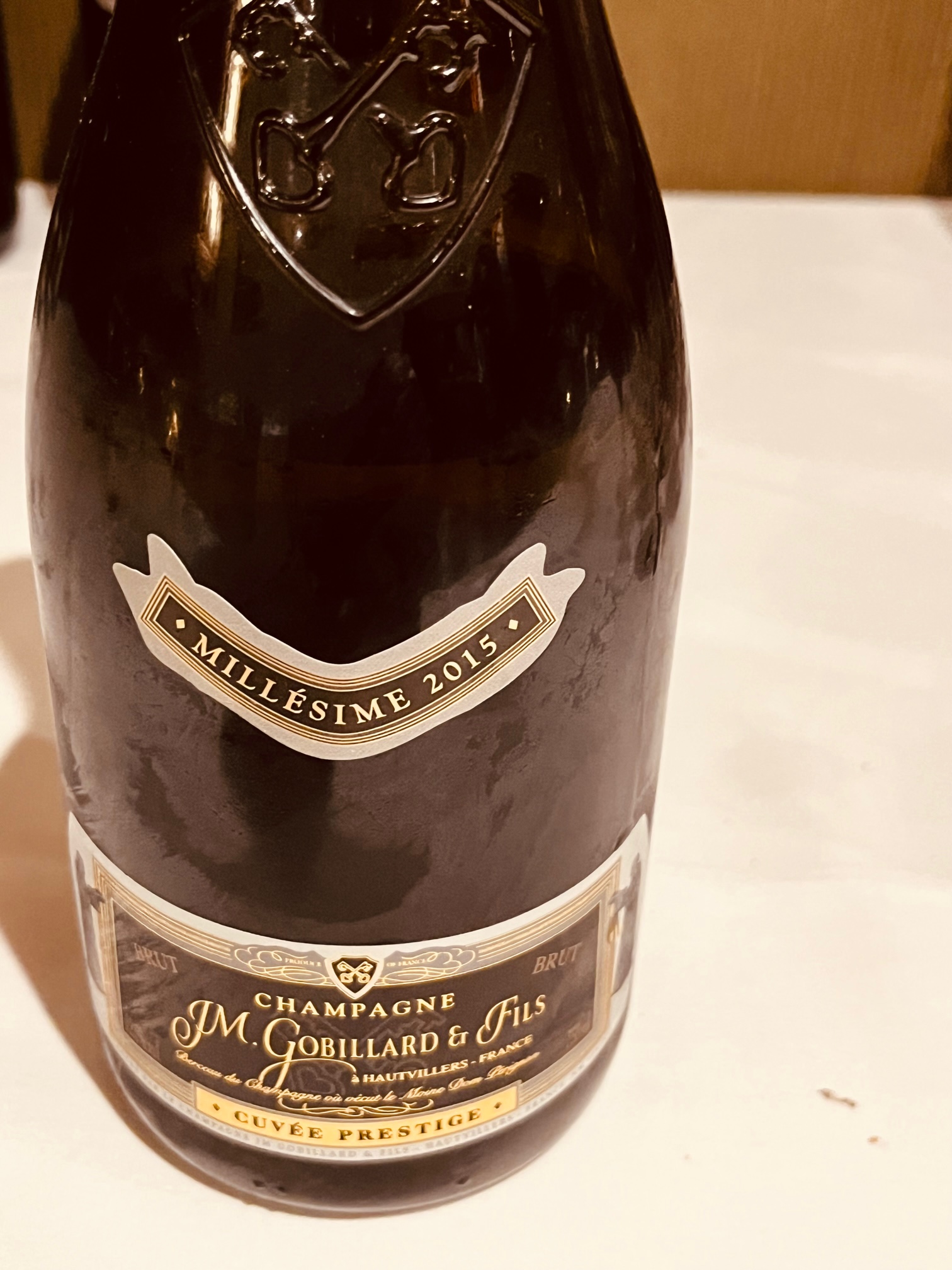
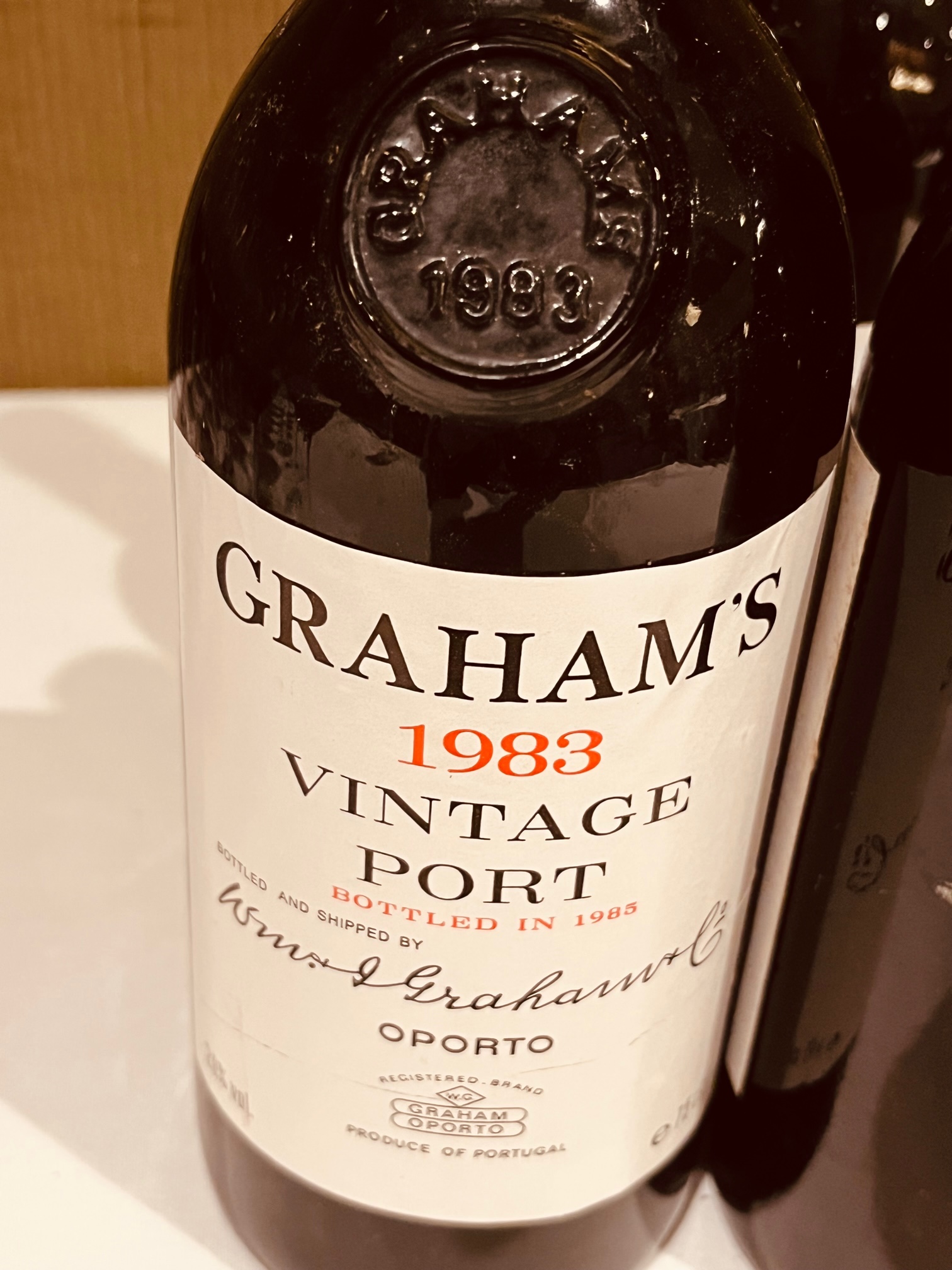
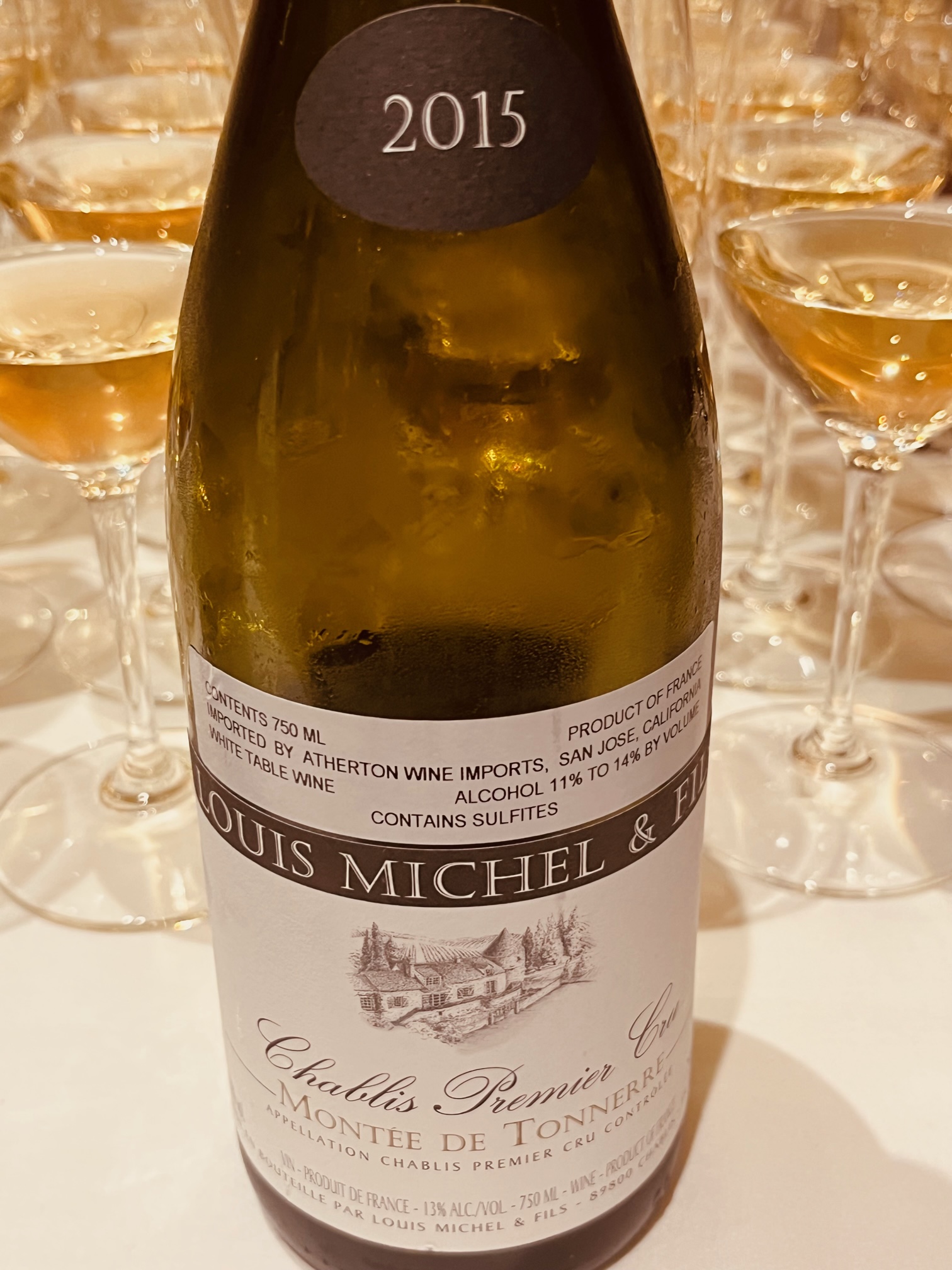

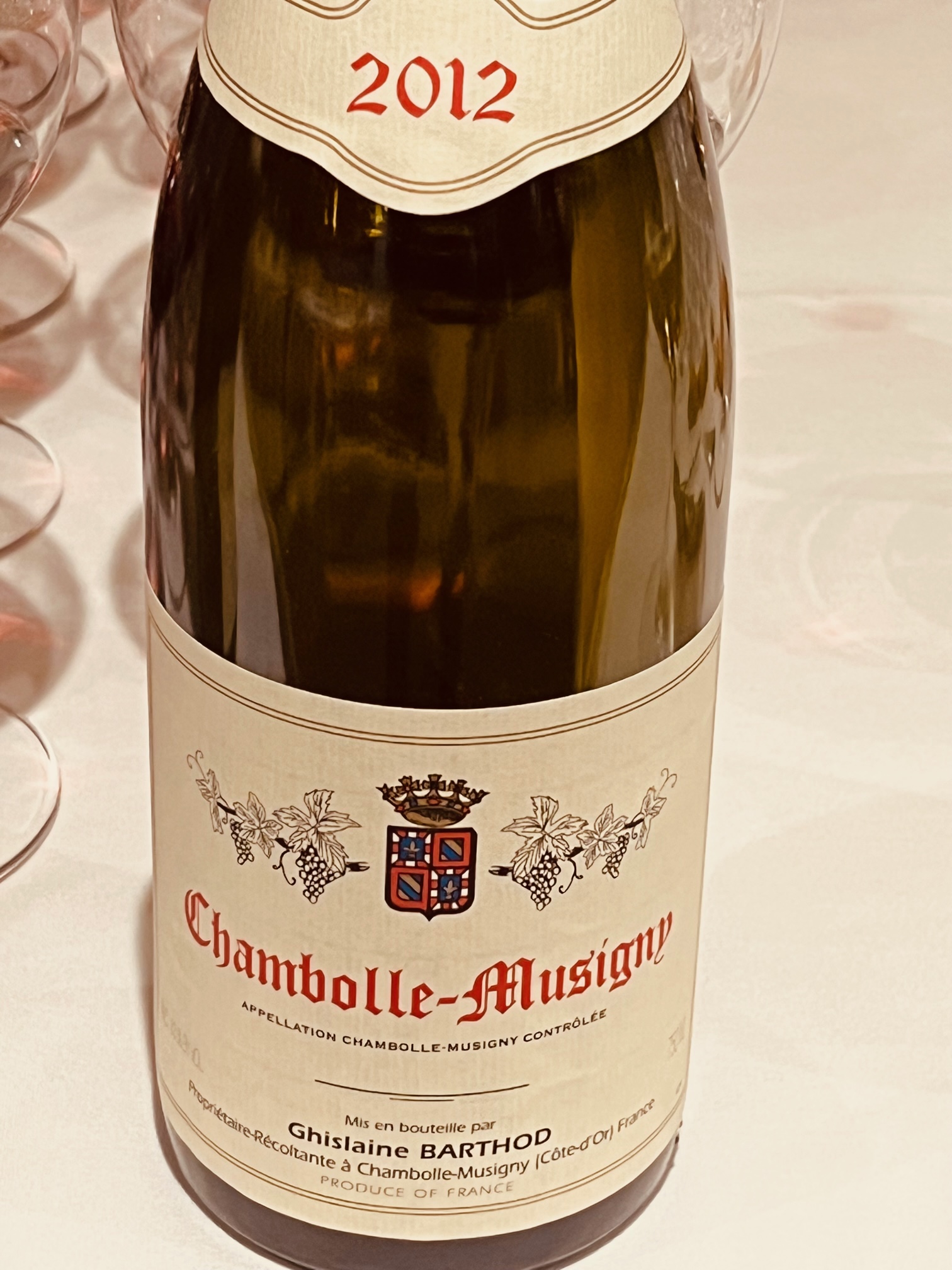
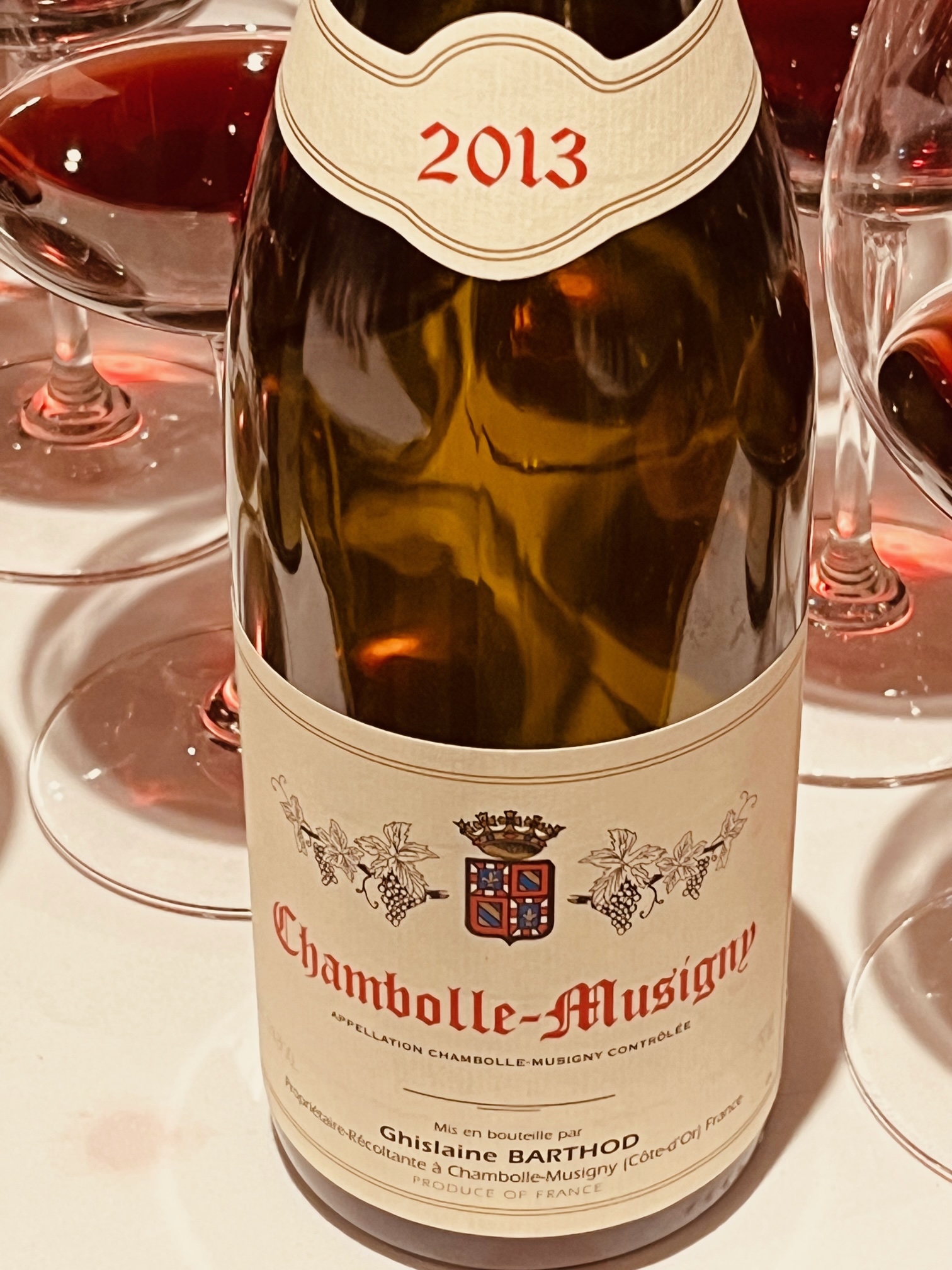
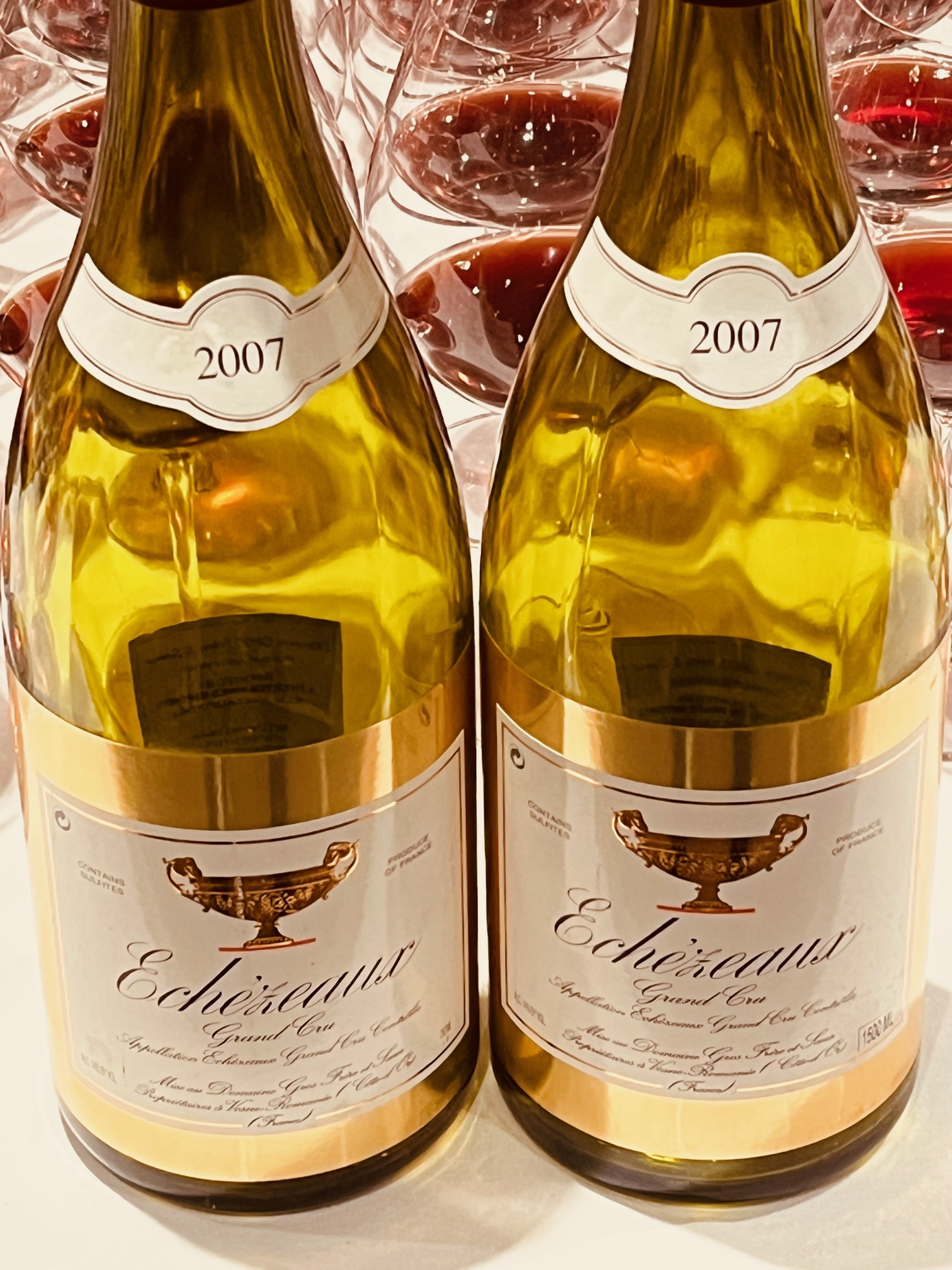
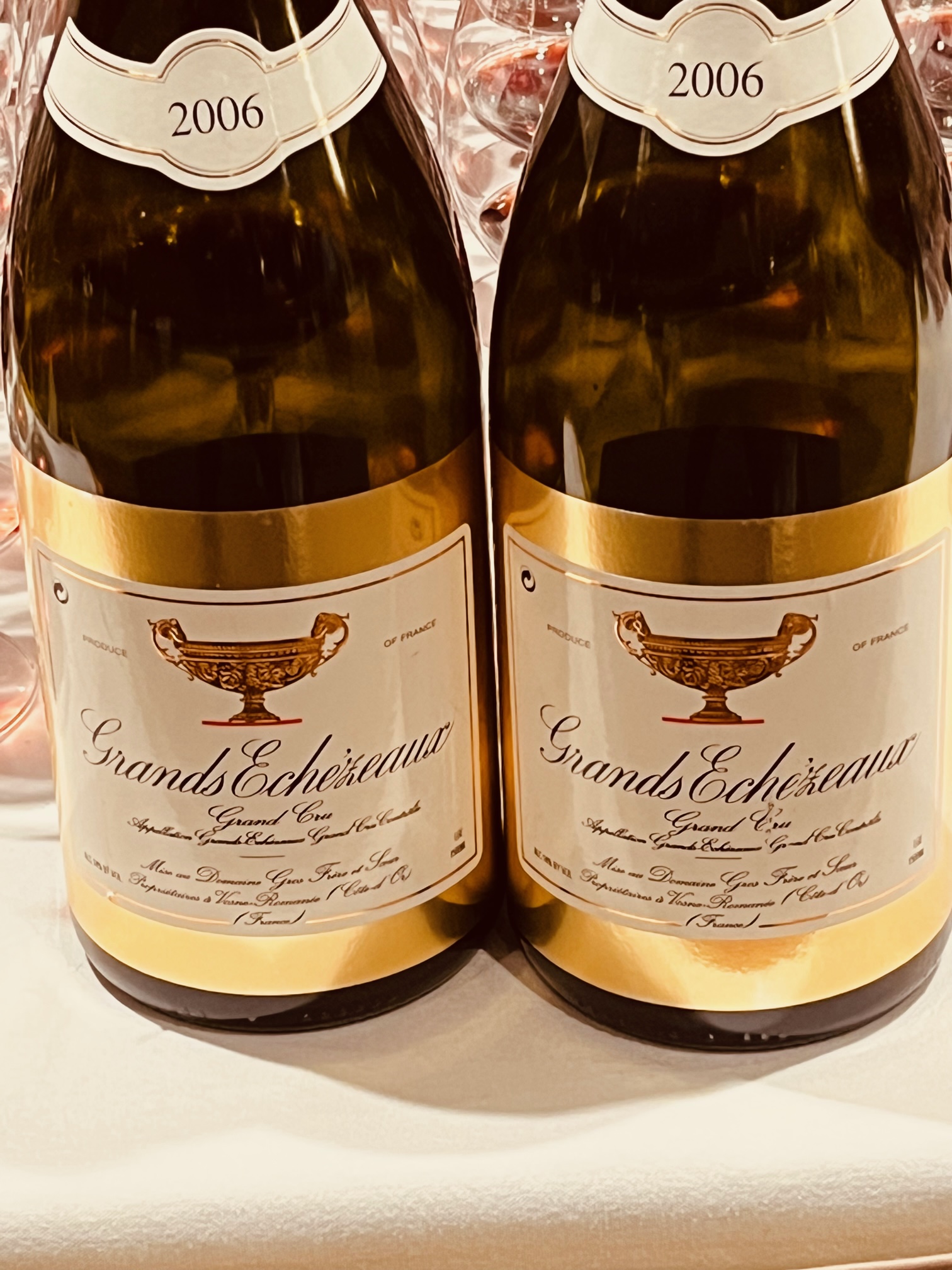
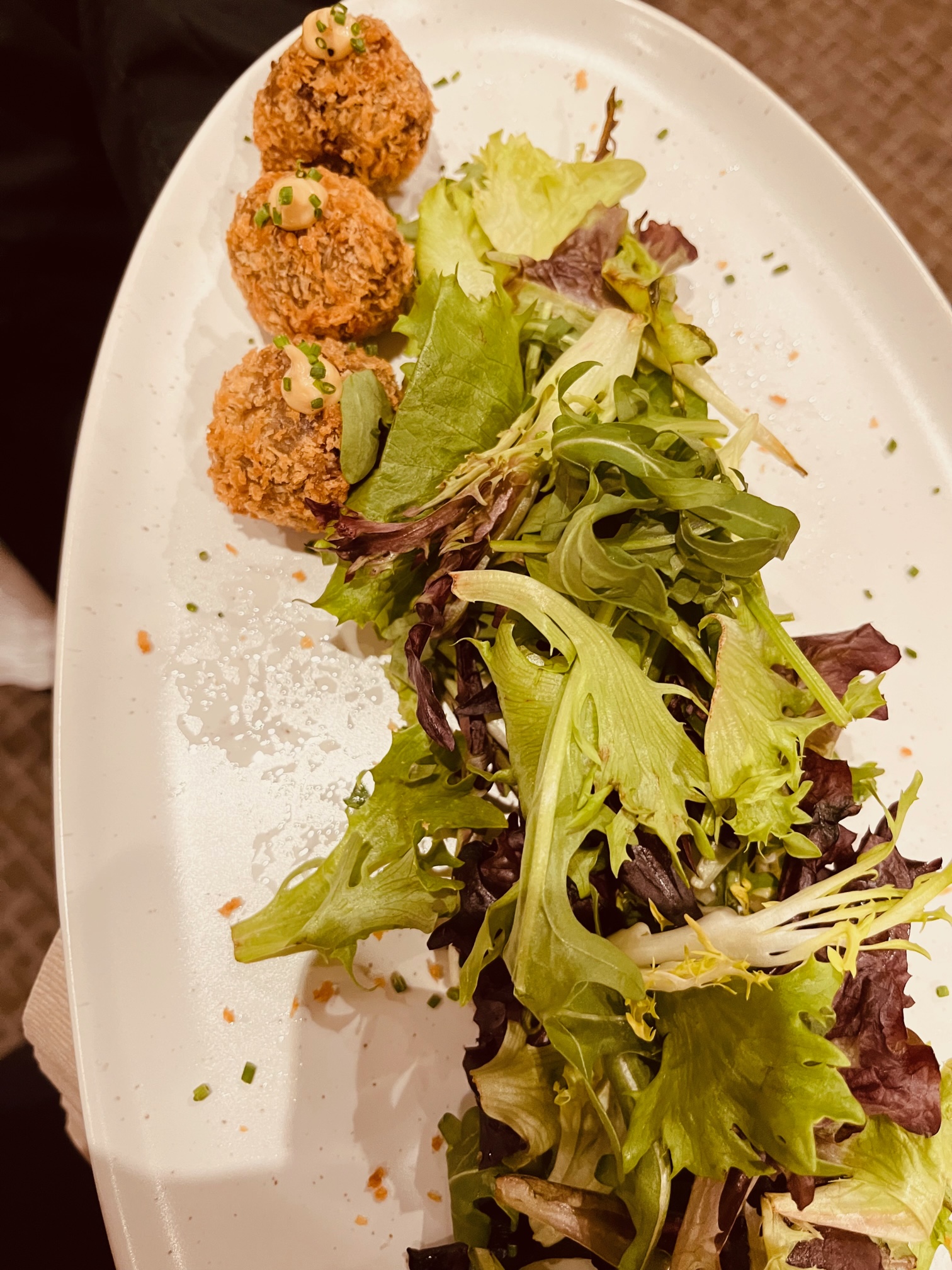
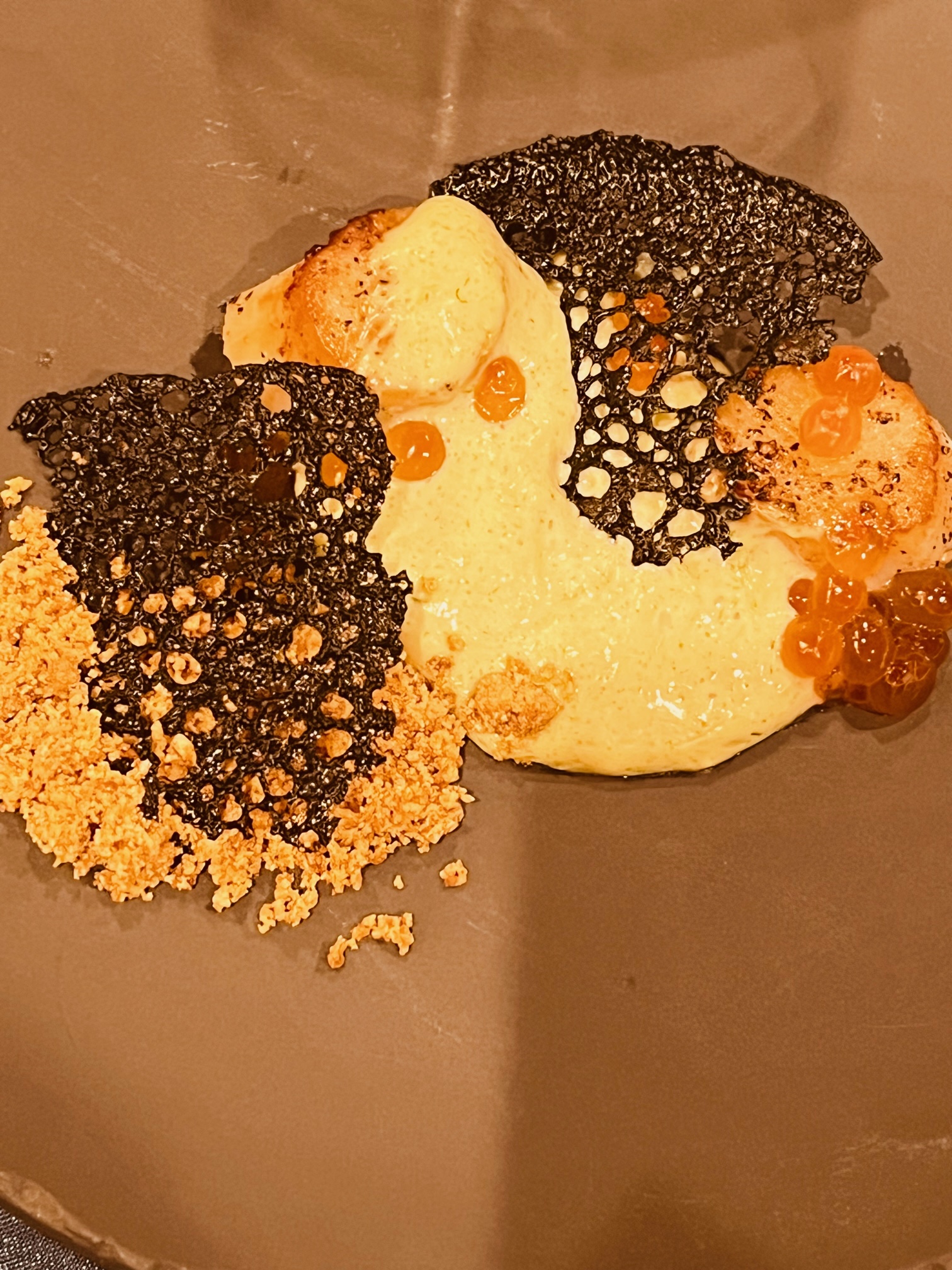
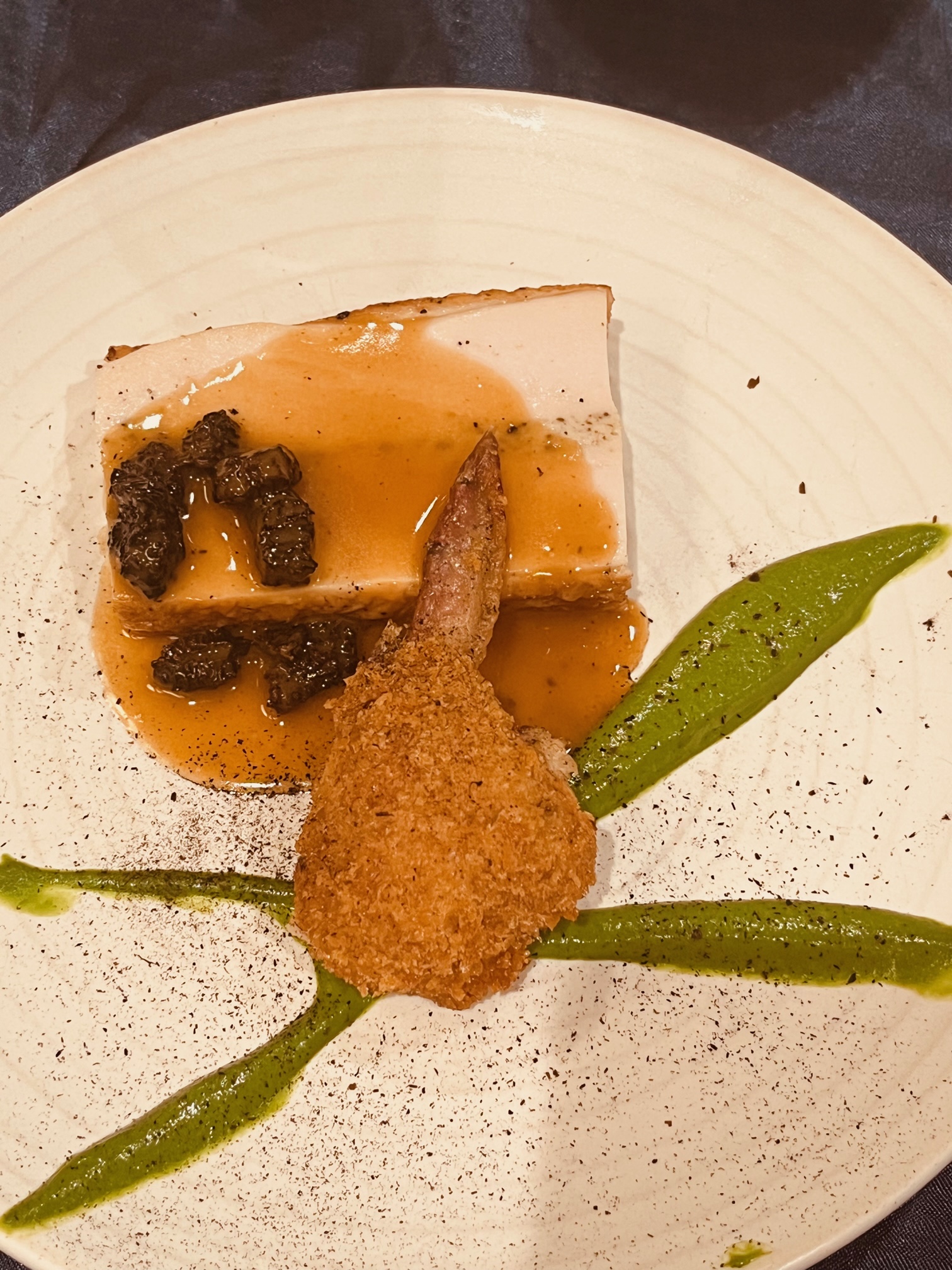
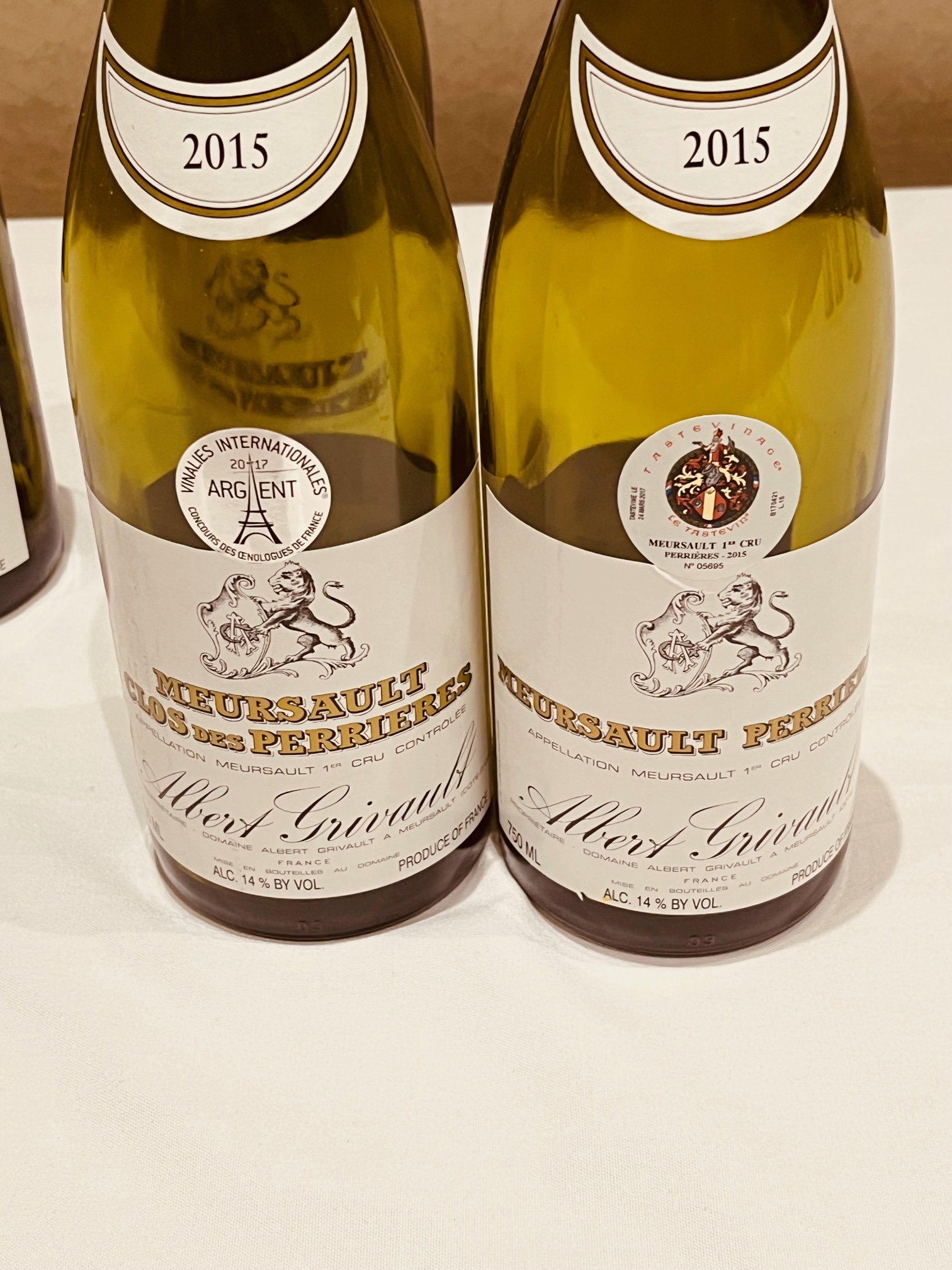
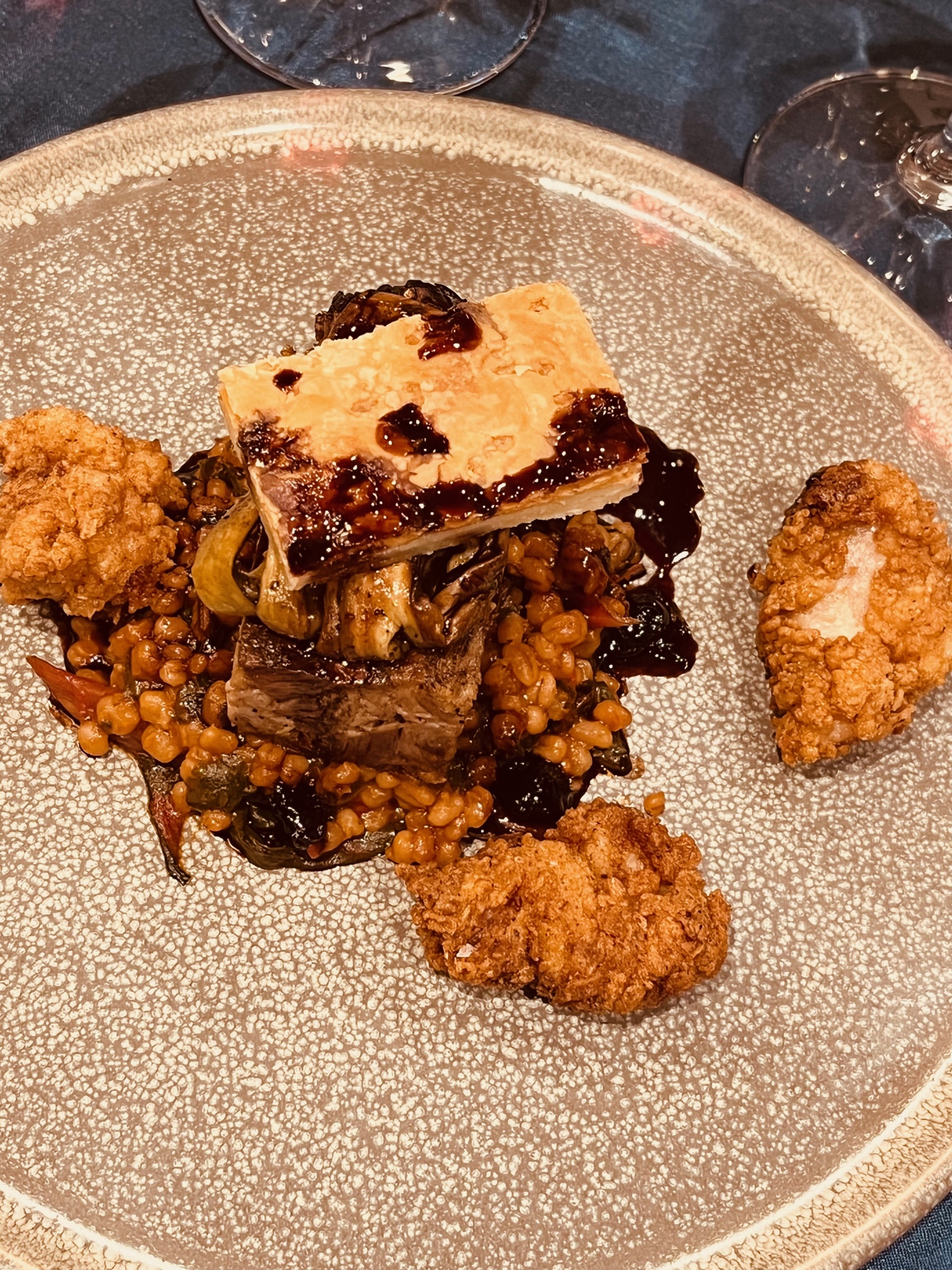
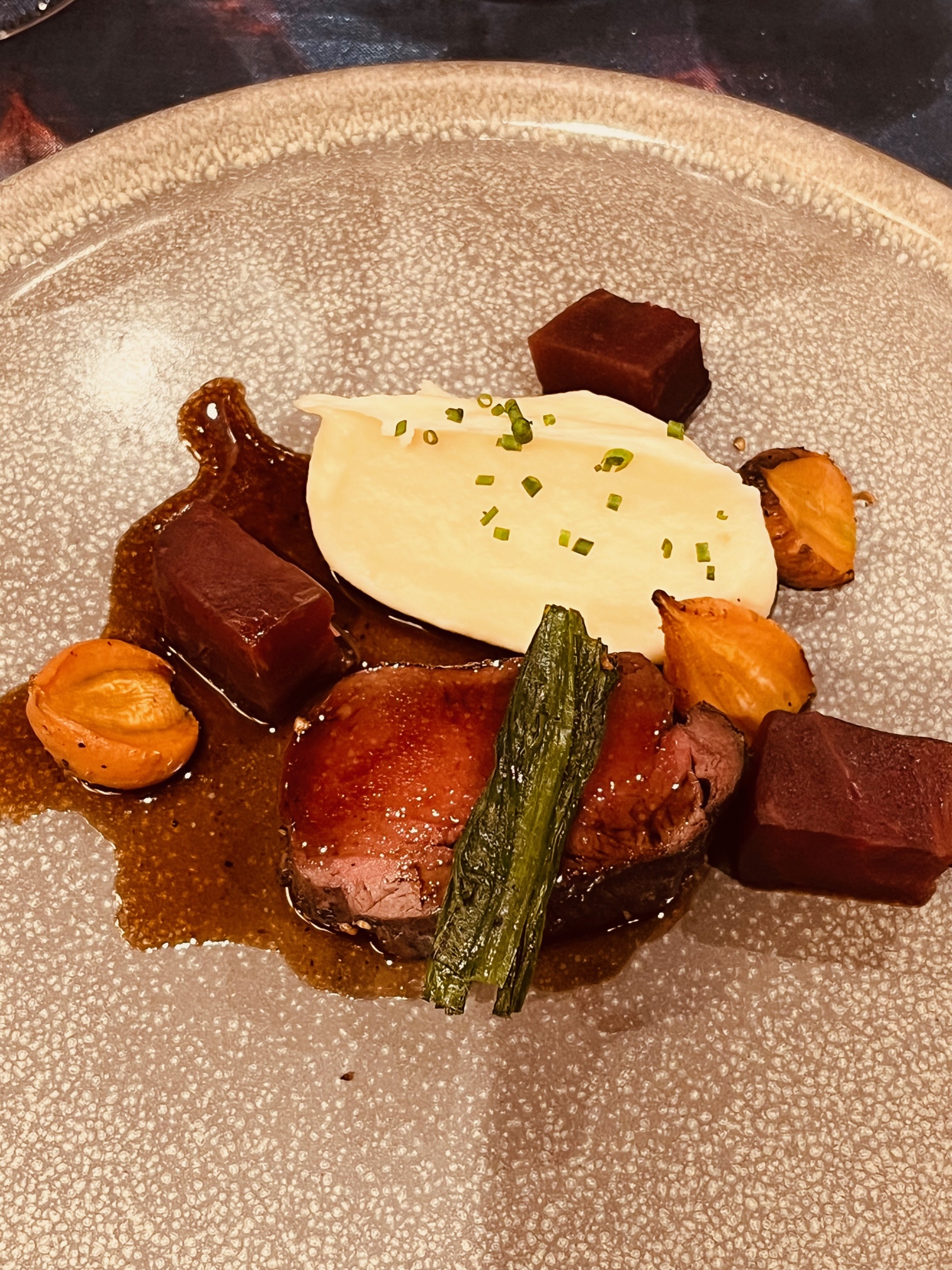
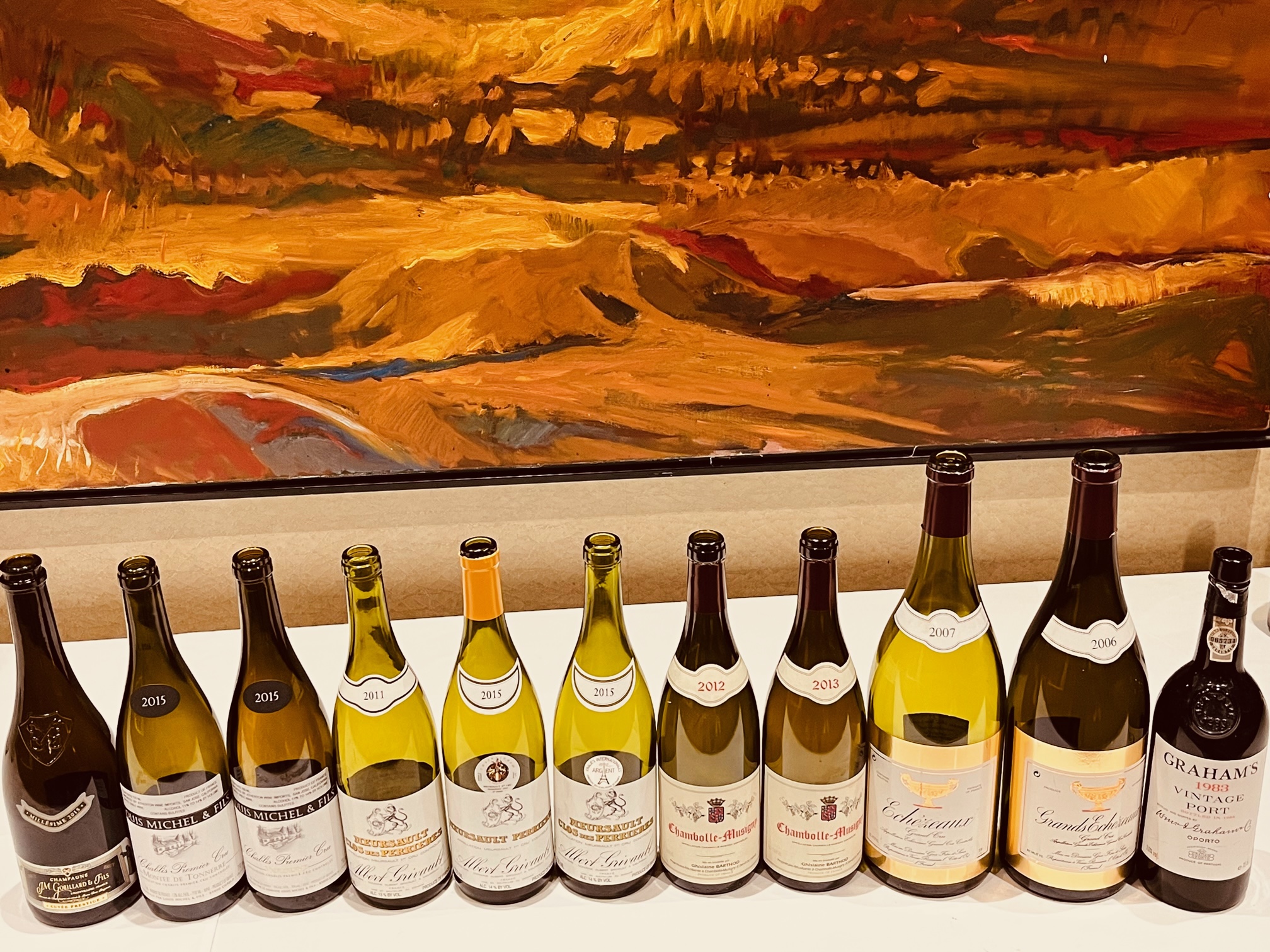
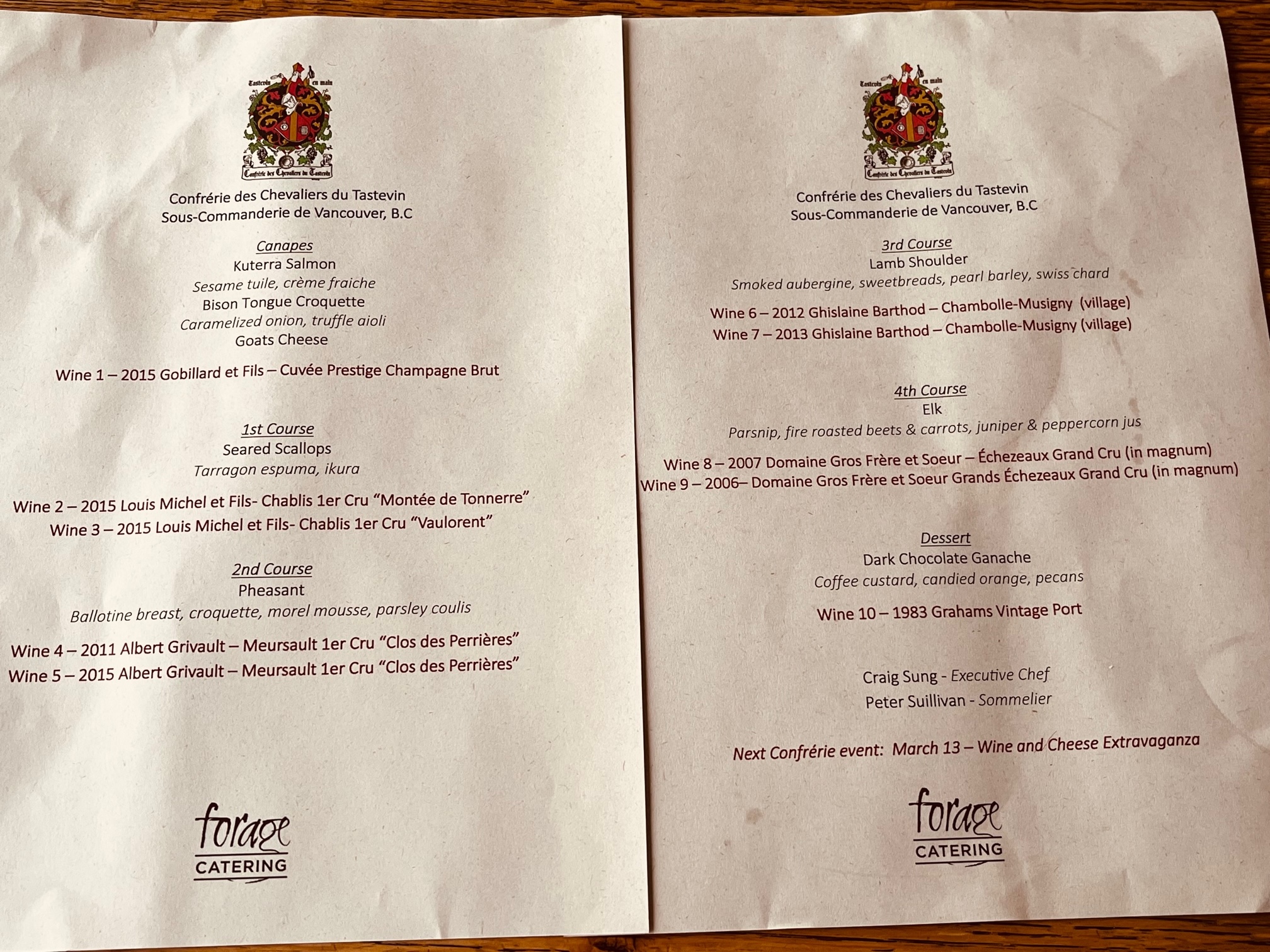
You might also like:
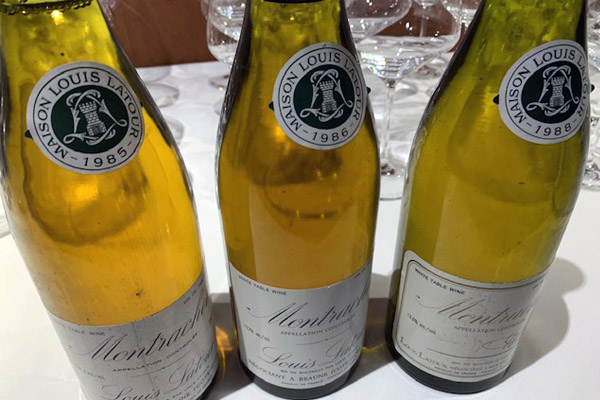 | 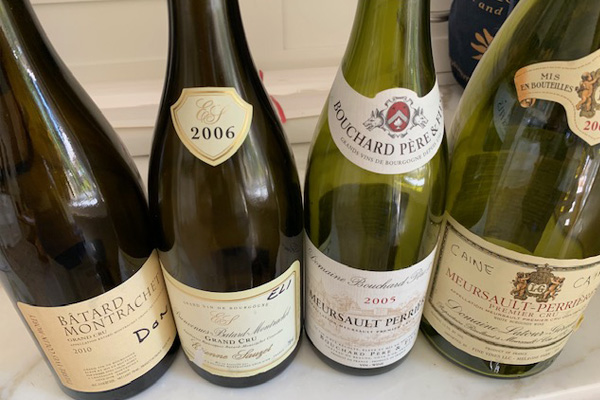 | 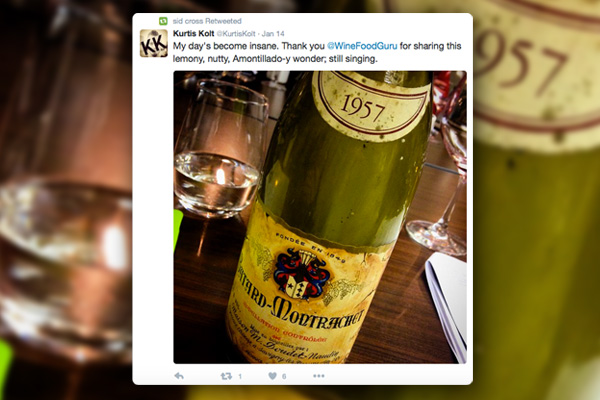 |